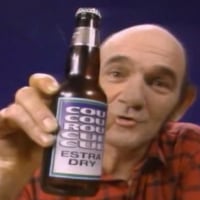Welcome to the EGGhead Forum - a great place to visit and packed with tips and EGGspert advice! You can also join the conversation and get more information and amazing kamado recipes by following Big Green Egg to Experience our World of Flavor™ at:
Want to see how the EGG is made? Click to Watch
Facebook | Twitter | Instagram | Pinterest | Youtube | Vimeo
Share your photos by tagging us and using the hashtag #BigGreenEgg.
Share your photos by tagging us and using the hashtag #BigGreenEgg.
Want to see how the EGG is made? Click to Watch
BGE maintenance: Fresh lump, burning out after L&S, etc?
jjdbike
Posts: 100
Hey folks,
Looking for some pro tips for maximizing flavor from BGE smokes.
For a high profile, high priority cook, do you always start w/ new - fresh lump, as opposed to retaining unburnt from previous cook?
Also, after several moist - humid low & slow cooks, do you burn-out the egg w/ a hot cook to burn off residue? I'm especially interested in this as I had a mishap last low & slow. I spilled the contents of my water pan (filled w/ stock & aromatics) into the bottom of the egg. It def made the lump burn uneven and incompletely.
Do you do any other maintenance to keep egg running well and food tasting it's best?
Thanks in advance.
JD
Looking for some pro tips for maximizing flavor from BGE smokes.
For a high profile, high priority cook, do you always start w/ new - fresh lump, as opposed to retaining unburnt from previous cook?
Also, after several moist - humid low & slow cooks, do you burn-out the egg w/ a hot cook to burn off residue? I'm especially interested in this as I had a mishap last low & slow. I spilled the contents of my water pan (filled w/ stock & aromatics) into the bottom of the egg. It def made the lump burn uneven and incompletely.
Do you do any other maintenance to keep egg running well and food tasting it's best?
Thanks in advance.
JD
Comments
-
Before each cook, I sit my Kick Ash Basket in a plastic bag-lined trash can and give it a good shake. Then I put the KAB back in to the Egg and load with more than enough lump for the next cook. Using the ash tool, I remove the ash from the base when the level is about 2 inches from the bottom of the cast iron grate. (Yes, I sit the KAB on the cast iron fire grate. Some people do. Some people don't.) Before KAB I used the ash tool to stir the unburnt lump so the ash would fall through the lower grate.
I did a clean burn early in my BGE journey. The result was a clean interior and warped bands. One and done on clean burn. Cooking pizzas, reverse sear steaks, or whatever @ 550 - 600 degrees is enough to take care of the buildup from low & slow cooks.
I don't put liquid in the drip pan, so I can't help you on that one, other than suggest you don't do it.
Large Egg, PGS A40 gasser. -
Don't worry about taking the partially used lump out, if anything it's cleaner than the new lump. The only thing is that since it has less BTU's left in it, you might need to fill it up all the way to ensure you have plenty.
Why are you using a water pan? You don't really need one in a kamado since they can maintain low temps. If anything, it's just a heat sink using BTU's. Plus it can throw off your vent settings when the water boils off.
Clean burns are always a great idea. If you see white smoke after 15-30 minutes after lighting, sometimes it's NOT the charcoal, it's the all the fat and gunk burning. Load it up with charcoal and let it rip until you don't see anymore white smoke anymore. The underside of the dome should be same color as the firebox.....sand color, not black. -
If you are consistently cooking meat in your egg, why would you ever do a clean burn?
That build up of grease is going to give your meat more flavor. Think of it this way, those BBQ joints that use a pit, do they ever clean them out? Nope. Do they ever replace their pits? Does Franklin BBQ say "Like, we could be so much better if these were brand new"? Ahhh no.
A lot goes into great BBQ. But you can take two identical cuts of meat, two equal portions of ingredients, and two chefs of fairly equal skills; and end up with two meals that taste different from one another. So what is so different? The ovens they use.If it's brown, it's cook'in....If it's black, it's done ---my Grandfather Medium BGE -
Actually, Aaron Franklin (or an employee) cleans his pits every Sunday after the last meat comes off. They are closed on Mondays. He seasons the pits with brisket fat. Here’s a pic.That doesn’t make what @bobroo incorrect with regard to the BGE. Routine clean burning is not needed.Some people do like to burn off some pork grease or other fatty buildup before poultry cooks in particular, but you don’t have to go nuclear to do it. Around 500 degrees for an hour should do it - without messing up bands or gaskets.

XXL BGE, Karebecue, Klose BYC, Chargiller Akorn Kamado, Weber Smokey Mountain, Grand Turbo gasser, Weber Smoky Joe, and the wheelbarrow that my grandfather used to cook steaks from his cattle
San Antonio, TX
-
Dude's got some serious spidey-skills! I would think the fat would just run out onto those funny boards on the floor.Foghorn said:Actually, Aaron Franklin (or an employee) cleans his pits every Sunday after the last meat comes off. They are closed on Mondays. He seasons the pits with brisket fat. Here’s a pic.That doesn’t make what @bobroo incorrect with regard to the BGE. Routine clean burning is not needed.Some people do like to burn off some pork grease or other fatty buildup before poultry cooks in particular, but you don’t have to go nuclear to do it. Around 500 degrees for an hour should do it - without messing up bands or gaskets. Clinton, Iowa
Clinton, Iowa -
After a messy low and slow just do a cook that requires high heat like steaks. Just make sure you let all the bad smoke burn off before you cook. This will maximize your time and charcoal dollar. 😉XL BGE, Large BGE, Small BGE, Weber Summit NGMemphis
-
For a long low and slow if I have guests and I want to be sure to not mess it up, I remove all the charcoal, clean the ash in the egg, add new charcoal and then add the older charcoal (smaller pieces) on top. All this to make sure I have good airflow.
I usually clean my drip pan too (remove old foil and add new one).
I typically do a clean burn every other year prior to replacing my gaskets but not always, only if it is excessively dirty to avoid messing up the deck.
You can see that my egg is well seasoned and I don’t think that it changes anything to the taste of the cook.
____________________Entrepreneurs are simply those who understand that there is little difference between obstacle and opportunity and are able to turn both to their advantage. •Niccolo Machiavelli -
Thanks everyone!
JD -
Agree with the advice given-
I’ll say after I cook wings or something fatty raised direct, the coals are coated in chicken grease and that can take a while to burn off on the next cook. If I’m doing a longer slower cook next, I’ve loaded fresh lump since I don’t want to get to 400 to burn it off.
*If* I planned ahead better, I’d burn off the fat on the greasy cook before I shut the egg down…+++++++++++++++++++++++++++Austin, Texas. I'm the guy holding a beer. -
That’s a good point, I typically cook greasy food indirect with a drip pan so fat doesn’t drip on the charcoal in my case. If you cook direct then the cleanup procedure may be different.sumoconnell said:Agree with the advice given-
I’ll say after I cook wings or something fatty raised direct, the coals are coated in chicken grease and that can take a while to burn off on the next cook. If I’m doing a longer slower cook next, I’ve loaded fresh lump since I don’t want to get to 400 to burn it off.
*If* I planned ahead better, I’d burn off the fat on the greasy cook before I shut the egg down…____________________Entrepreneurs are simply those who understand that there is little difference between obstacle and opportunity and are able to turn both to their advantage. •Niccolo Machiavelli
Categories
- All Categories
- 184K EggHead Forum
- 16.1K Forum List
- 461 EGGtoberfest
- 1.9K Forum Feedback
- 10.5K Off Topic
- 2.4K EGG Table Forum
- 1 Rules & Disclaimer
- 9.2K Cookbook
- 15 Valentines Day
- 118 Holiday Recipes
- 348 Appetizers
- 521 Baking
- 2.5K Beef
- 90 Desserts
- 167 Lamb
- 2.4K Pork
- 1.5K Poultry
- 33 Salads and Dressings
- 322 Sauces, Rubs, Marinades
- 548 Seafood
- 175 Sides
- 122 Soups, Stews, Chilis
- 41 Vegetarian
- 103 Vegetables
- 315 Health
- 293 Weight Loss Forum







